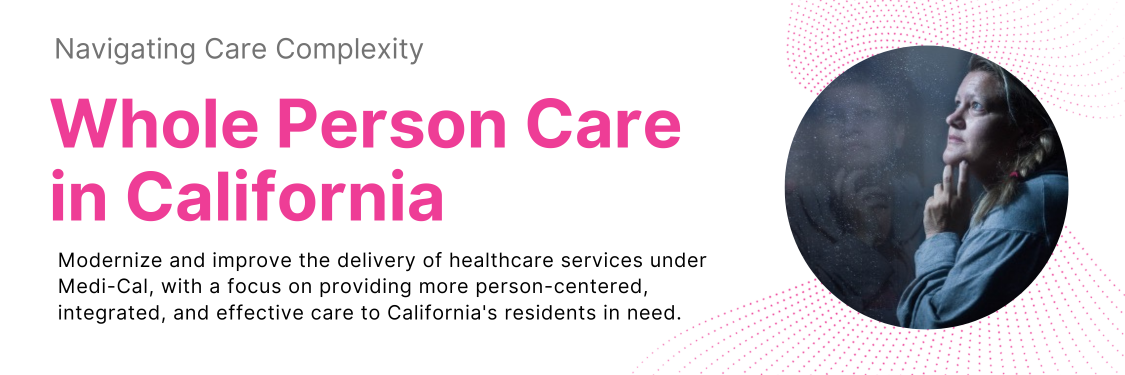The Emergence of Whole-Person Care: What is Different this Time?
The concept of Whole Person Care (WPC) echoes across ancient cultures globally. For instance, Ayurveda from India emphasizes the balance between body, mind, and spirit. Similarly, Traditional Chinese Medicine incorporates the concept of Qi, aiming for harmony within the body and with nature. Native American healing practices also stress the importance of spiritual and physical health interconnectedness. These examples from different parts of the ancient world showcase a long-standing recognition of holistic health, illustrating that the foundation of WPC is deeply rooted in historical practices As we navigate the complexities of modern healthcare, the resurgence of this comprehensive approach, especially in the U.S., marks a pivotal return to these timeless principles.
Movement towards WPC
In recent years, the U.S. has seen a significant shift towards the WPC model, recognizing that addressing an individual's health means considering a spectrum of needs beyond just medical interventions. Here are some examples:
California's CalAIM: Aims to reform Medi-Cal by integrating medical, behavioral, and social services, focusing on a coordinated care approach that considers Social Determinants of Health (SDOH). More information can be found on the [California Department of Health Care Services website]
CMS' Integrated Behavioral Health Model: This model by the Centers for Medicare & Medicaid Services integrates behavioral health with primary care for Medicaid and Medicare beneficiaries, especially those with moderate to severe mental health conditions and substance use disorders, also addressing SDOH. Detailed info is available on the [CMS website]
Collaborative Care Model (CoCM): Integrates behavioral healthcare into primary care settings to improve access and outcomes. The American Psychiatric Association offers resources and information at [APA Psychiatric Services].
Certified Community Behavioral Health Clinics (CCBHCs): Provide comprehensive, community-based mental health and substance use services, enhancing access to care. Further details are on the [SAMHSA website].
North Carolina's Tailored Care Management: Part of Medicaid transformation, this model emphasizes a unified care manager for both physical and behavioral health. Information is available on the [North Carolina Department of Health and Human Services website].
New York's Health Home program: Focuses on a network of providers managing medical and social needs for Medicaid patients with chronic conditions. More details can be found on the [New York State Department of Health website].
Mental Health Parity and Addiction Equity Act (MHPAEA): Ensures equal insurance coverage for mental health and substance use disorders as for medical/surgical services. Information is available on the [CMS website].
These programs collectively aim to enhance healthcare by considering the full spectrum of an individual's needs, recognizing the importance of both medical interventions and the impact of social determinants on health.
The Path Forward: Integration, Enhanced Care Management, SDOH and Education
What distinguishes the contemporary iteration of WPC is the structured recognition of the need for integrated care delivery. Enhanced Care Management (ECM) and the emphasis on SDOH are key components of this model, ensuring that healthcare provision is comprehensive, coordinated, and patient centered. Moreover, the shift towards a managed care model, as opposed to the traditional Fee-for-Service (FFS) system, aligns with the WPC philosophy by prioritizing outcomes and cost accountability. This approach ensures that care is not only comprehensive but also sustainable and outcome-focused, preventing the pitfalls of unchecked costs and fragmented care. In addition, education plays a crucial role in advancing Whole Person Care (WPC) by empowering individuals with knowledge about the importance of integrating physical, mental, and social health.
What is Different This Time? The Operationalization and Funding of WPC initiatives
While the concept of Whole-Person Care (WPC) is deeply rooted in history, its resurgence in the modern healthcare landscape comes with a significant twist: the operationalization and institutionalization of these principles, backed by substantial funding. This shift is not merely in acknowledgment of WPC's value but in the concrete steps being taken to integrate it into healthcare systems, supported by targeted financial investments. The distinction lies in how ancient concepts are being translated into actionable, funded initiatives, making WPC more than just an ideal—it's becoming the standard.
Operationalizing and Institutionalizing WPC
The transformation of healthcare systems towards WPC is evident in the development of structured programs and reforms designed to integrate care services. For instance, initiatives like IBH and CalAIM don't just advocate for a holistic approach; they provide a framework for implementing these practices within existing healthcare infrastructures. This involves creating networks of care that encompass physical health, mental health, and social services, ensuring that care delivery is as comprehensive as the concept of WPC itself.
Funding: The Catalyst for Change
Perhaps the most critical factor that sets apart the current wave of WPC initiatives is the financial backing they receive. Unlike in the past, where holistic care models might have struggled for lack of support, current initiatives are bolstered by dedicated funding streams.
IBH Model: Launched by CMS, the IBH Model comes with federal support to integrate behavioral health with primary care, recognizing the need for funding to support the infrastructure required for such integration.
CalAIM: California's ambitious reform of its Medi-Cal program is supported by state funding, including investments in technology and services necessary to achieve its integrated care objectives.
Technology and Infrastructure Funding: Beyond specific healthcare models, there is an increasing allocation of resources towards the technology and infrastructure essential for WPC. This includes investments in electronic health records (EHRs), telehealth platforms, and data analytics tools that facilitate the seamless coordination of care across different providers and services.
These examples underscore a crucial development in the move towards WPC: the understanding that to truly operationalize and institutionalize holistic care, financial investment is non-negotiable. By allocating funds towards the implementation of WPC principles, healthcare systems are not just paying lip service to the idea of integrated care; they are building the mechanisms required to make it a reality.
Aztute: A Beacon for Integrated Whole-person Care
In the evolving healthcare landscape, Aztute stands out as a pioneering force in integrated care, thanks to its innovative Precision Health software platform. This modern health platform is designed to meet community needs effectively, integrating data analysis, collaboration, education, and an emphasis on social determinants of health to foster a safer, healthier, and more resilient future.
Aztute's comprehensive approach positions it as a leader in catering to the diverse requirements of community health. The platform's proven effectiveness in managing the complex demands of the CalAIM program in California showcases its readiness to align with and excel in initiatives like the IBH Model. Aztute leads the charge in integrated care by enhancing engagement with members, facilitating seamless integration with Managed Care Plans (MCPs), and addressing the Social Determinants of Health (SDOH) in a holistic manner. Its proficiency in care coordination, referral management, and claims processing ensures that healthcare providers, payers, and community services are interconnected, offering a cohesive healthcare experience. The infrastructure Aztute provides not only supports a comprehensive view of patient health but also drives more efficient delivery of healthcare services, positioning Aztute as a vital contributor to the shift towards whole-person healthcare.
Conclusion
The difference in the current resurgence of WPC lies in its transition from concept to practice, driven by strategic funding and policy support. As these initiatives demonstrate, the path to a more holistic, integrated approach to healthcare is not just envisioned but actively constructed, with the allocation of resources reflecting the commitment to making WPC an operational reality. This era of healthcare reform marks a pivotal moment where the age-old wisdom of treating the whole person is finally being equipped with the tools and funding necessary to bring it to life in modern medical practice. As WPC enfolds in the US, Aztute stands ready to leverage its technology and expertise to meet the complex needs of this new era in healthcare. With a focus on innovation, collaboration, and patient-centered care, Aztute is not just participating in the trend of integrated care delivery—it's leading it.
References:
Centers for Medicare & Medicaid Services (CMS) - For details on the Innovation in Behavioral Health (IBH) Model, the official CMS website provides comprehensive information about the initiative, its goals, and its significance for Medicaid and Medicare populations. [Innovation in Behavioral Health (IBH) Model | CMS]
California Health Care Foundation (CHCF) - Offers extensive insights into California's CalAIM initiative, explaining its objectives, the integrated care model it proposes, and its impact on Medicaid beneficiaries in California. [CalAIM Explained | California Health Care Foundation]
North Carolina Department of Health and Human Services - Provides information on North Carolina's Tailored Care Management model as part of Medicaid transformation, highlighting its approach to integrating physical and behavioral health services. [Tailored Care Management | NC Department of Health and Human Services]
New York State Department of Health - Details New York's Health Home program, including its objectives to coordinate care for people with chronic conditions and how it integrates services across a range of healthcare and social needs. [Health Homes | New York State Department of Health]



